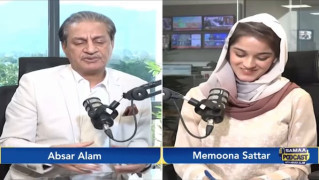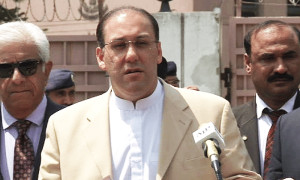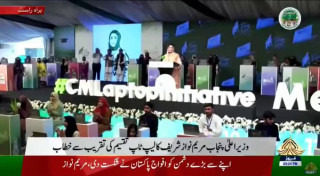modern.fakir
Chief Minister (5k+ posts)
India economy slows to 7% growth, recovery long way ahead : Modi failed!


Quarterly gross value added at basic price at constant prices too grew at a sluggish 7.1 per cent in the first quarter of the fiscal as compared to a year ago. - See more at:
http://indianexpress.com/article/bu...er-cent-in-june-quarter/#sthash.2hBSQm9g.dpuf
New Delhi: Economic growth slowed by more than expected in the quarter to June, according to data released on Monday that will worry Prime Minister Narendra Modi and prompt more urgent calls from his aides for interest rate cuts.
Gross domestic product expanded an annual 7 per cent rate in the April-June quarter, government figures showed. That was slower than provisional growth of 7.5 per cent in the previous quarter.
Analysts polled by Reuters expected growth for the quarter to come in at 7.4 per cent, but a weak showing from the services sector acted as a drag on Asia's third-largest economy.
"Growth conditions are still weak and are picking up in a very, very gradual manner," said A. Prasanna, economist at ICICI Securities Primary Dealership.
While India matched growth in China, the loss of momentum comes just as PM Modi's image as the country's economic saviour starts to fade 15 months after his historic electoral triumph.
He swept to power on a promise of speedier growth creating millions of manufacturing jobs. But businesses are getting restless with slow progress in removing barriers to growth.
The data will also strengthen the chorus from Modi's administration for a rate cut. Some bureaucrats are already arguing for an immediate reduction of as much as 50 basis points in the Reserve Bank of India's main 7.25 per cent policy rate.
"In our view, (it) clearly paves the way for two more repo rate cuts before the close of the financial year," said Jyotinder Kaur, principal economist at HDFC Bank.
The RBI has cut the policy repo rate 75 basis points since January. But it left the rate on hold at its last policy review early this month.
While it has not ruled out further monetary easing, it has tied up future rate cuts to the inflation outlook.
Many in the government are worried that growth could slip below the official target of 8 to 8.5 per cent for the year to March, and sees the RBI's caution as worsening the situation.http://indianexpress.com/article/bu...c-growth-slows-to-7-per-cent-in-june-quarter/


Quarterly gross value added at basic price at constant prices too grew at a sluggish 7.1 per cent in the first quarter of the fiscal as compared to a year ago. - See more at:
http://indianexpress.com/article/bu...er-cent-in-june-quarter/#sthash.2hBSQm9g.dpuf
New Delhi: Economic growth slowed by more than expected in the quarter to June, according to data released on Monday that will worry Prime Minister Narendra Modi and prompt more urgent calls from his aides for interest rate cuts.
Gross domestic product expanded an annual 7 per cent rate in the April-June quarter, government figures showed. That was slower than provisional growth of 7.5 per cent in the previous quarter.
Analysts polled by Reuters expected growth for the quarter to come in at 7.4 per cent, but a weak showing from the services sector acted as a drag on Asia's third-largest economy.
"Growth conditions are still weak and are picking up in a very, very gradual manner," said A. Prasanna, economist at ICICI Securities Primary Dealership.
While India matched growth in China, the loss of momentum comes just as PM Modi's image as the country's economic saviour starts to fade 15 months after his historic electoral triumph.
He swept to power on a promise of speedier growth creating millions of manufacturing jobs. But businesses are getting restless with slow progress in removing barriers to growth.
The data will also strengthen the chorus from Modi's administration for a rate cut. Some bureaucrats are already arguing for an immediate reduction of as much as 50 basis points in the Reserve Bank of India's main 7.25 per cent policy rate.
"In our view, (it) clearly paves the way for two more repo rate cuts before the close of the financial year," said Jyotinder Kaur, principal economist at HDFC Bank.
The RBI has cut the policy repo rate 75 basis points since January. But it left the rate on hold at its last policy review early this month.
While it has not ruled out further monetary easing, it has tied up future rate cuts to the inflation outlook.
Many in the government are worried that growth could slip below the official target of 8 to 8.5 per cent for the year to March, and sees the RBI's caution as worsening the situation.http://indianexpress.com/article/bu...c-growth-slows-to-7-per-cent-in-june-quarter/
Last edited by a moderator:







































